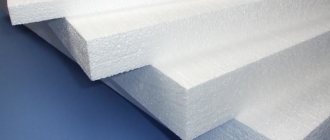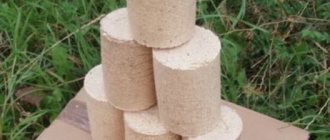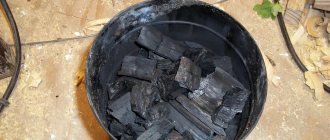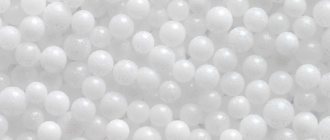DIY foam cutting device
Polystyrene foam can be cut not only with nichrome thread, but also with metal plates. The basis should be a regular soldering iron with a power of 60 W. It will need to be reconstructed - instead of a sting, place a knife plate. Hot-melt synthetic is also used as the main material.
The wooden leg must be additionally equipped with support legs. First, make a slot in the board and place a knife in it. Additionally, the device should be equipped with a stand with brackets
Of no small importance is the safety screen, which will further protect the person from burns.
Cutting technology
Cutting technology and all the tools that are used for these purposes can be divided into two large groups:
- mechanical tool;
- electric.
Each method is worth considering separately.
Mechanical method

The mechanical method of cutting foam plastic involves the use of the following tools:
- knife;
- jigsaw;
- saws.
The first cutting method requires a sharp knife. Most often, a shoemaker's knife made of rapid is used for these purposes. Its advantage is a durable handle and a special sharpening angle. But this option is only suitable for those cases when it is necessary to cut foam plastic with a thickness of up to 4 cm. If we are talking about sheets with a greater thickness, then a blade of greater thickness will be required, because too thin can bend, which will lead the cutting line away. In addition, during the cutting process you will need to periodically adjust the blade, so you need to keep a stone of the required grain size on hand. After marking the foam sheet, you need to move the knife along the cutting line towards you, holding it at an angle. In some cases, you will need to make several passes to achieve the desired result. The blade needs to be adjusted every two meters of the cut.

Another tool that is great for cutting foam but produces a lot of waste is a hacksaw. In this case, it is necessary to choose a product with a fine tooth. A metal blade will not cope with the task effectively, so a hacksaw is used. Thanks to the longer length of the hacksaw blade, you can cut sheets with greater thickness. In this case, the best solution would be a hardened tooth without a large set, which will make the cutting line thinner. The advantage of using such a tool when cutting foam is greater safety, since the sharp part of the blade is not directed towards the body.
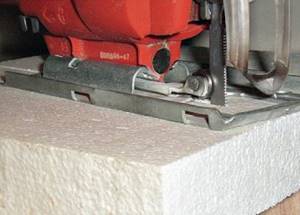
The power tool is also suitable for cutting foam. Excellent tools in this regard are the reciprocating saw and jigsaw. The difference between them is the speed and depth of cut. The effect is in many ways comparable to that achieved when working with a hacksaw. For work, it is better to purchase attachments with a minimum tooth blade for wood. Using a jigsaw gives you greater freedom when it comes to making shaped cuts. This is easy to do because the width of the canvas is small. The cut is more accurate by adjusting the speed of the blade. It is recommended to turn off the pendulum stroke that is applied to the wood during the process to reduce waste.
Note! If you don’t have any other tool at hand, you can use a grinder with a diamond blade to cut foam. In this case, the rotation speed must be selected so that it does not melt
Nichrome thread
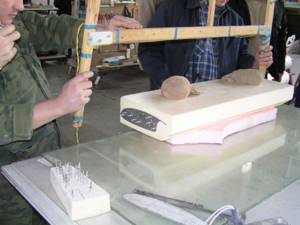
The most comfortable way to cut foam is with a hot nichrome thread. With the correct selection of speed, it is possible to achieve a minimal seam and not melt the ends. The essence of cutting is that the sheet is passed through a wire along a marked line. You can make such a cutting device yourself. To do this you will need:
- LATR or transformer;
- nichrome thread;
- insulators;
- holders.
The thickness of the tungsten filament that will be used to cut the foam is 0.2 mm. It can be purchased at a specialty store or removed from household appliances. The first step is to install two posts, between which the thread will be stretched. This can be done in any convenient way that makes cutting easy. Insulators are fixed to the racks, which will prevent them from heating. Springs are mounted to the insulators to ensure constant thread tension. You can connect wires to them that will come from the LATR or from the step-down transformer.

A rheostat is a better source than a conventional transformer, since the power consumption, and therefore the heating temperature of the filament, can be easily adjusted depending on the thickness of the foam. A car battery can be used as a power supply if foam cutting is rarely done. In this case, the cutter acquires a certain autonomy and additional safety.
It is important for the design to choose the correct length of wire so that it is heated to the required temperature. The assembly process of such a cutting machine is described in detail in the video

Advice! An interesting cutting device can be made from a soldering iron with a power of 100 W. To do this, it is necessary to dismantle the factory tip and install in its place a thin metal plate or blade, which, when heated, will give an effect similar to a machine tool.
What does a foam cutting machine consist of?
The simplest machine for cutting foam plastic is a wide tabletop; its dimensions should be selected based on the width of the material being processed. It is best to use a sheet of chipboard (chipboard) as the material for making the machine tabletop.
The main element for cutting foam is a string of nichrome wire, which is connected to a step-down transformer. Such a transformer converts a voltage of 220 Volts to 24 Volts.
Particular attention is paid to the control element of the machine, which allows you to set the required thickness of the material. For these purposes, metal nuts (stands) are installed at the edges of the tabletop, into which long bolts with springs are screwed. A long piece of nichrome wire (string) is connected to the springs and stretched.
To avoid string breakage and to transmit tension, its ends are connected through springs. Thus, by tightening or unscrewing the bolts, you can adjust the height of cutting the foam with a string. The length of the bolts is also selected taking into account the thickness of the foam that will need to be cut on a homemade machine.
What kind of transformer is needed for cutting foam plastic with a string?
Let's talk about which transformer to use for cutting foam plastic with a string. A step-down transformer is not always needed, since everything largely depends on what materials the string is made of.
If it is a chrome wire, then it can be connected to 220 Volts. However, working with such a foam cutting machine will be very dangerous, so we recommend using a step-down transformer.
To make a homemade machine that will cut foam plastic, it is best to use a transformer from 220 to 24 Volts and nichrome wire with a diameter of 0.5-0.8 mm. It is much safer to work with such voltage.
You should also always remember that when cutting foam plastic with a string, a large amount of harmful smoke is released. Accordingly, the second condition regarding safety when working with the device is a well-ventilated room.
Shaped cutting
Lately, shaped cutting of foam plastic, for which a thermal cutter is used, has been quite in demand. The cutting element in this case is a nichrome wire, attached to an equipped handle made of insulating material. The thermal cutter makes it possible to make indentations of various shapes in polystyrene foam.
After such treatment, a melted crust is formed on the surface of the material, which gives greater strength to the material, but also covers the pores. Therefore, it is necessary to use a step-down transformer, which is made independently. You just need to purchase specialized transformer hardware.
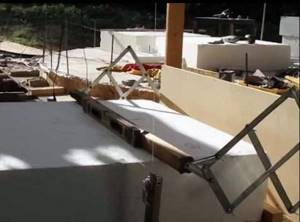
To correctly select the current value, it is necessary to make a rheostat, for which you can use a pre-stretched spiral of an electric stove. To make the winding frame, you can use a ceramic or asbestos-cement pipe (pipe parameters: thickness 1.5-2 cm, length 8 cm). Nichrome wire must be wound onto the pipe until the frame is completely filled.
How to properly cut polystyrene foam with a knife so that it does not crumble
When slabs of polymer material are used in the process of insulating walls, ceilings, and roofs with your own hands, thermal cutters are not always justified. Structures, as a rule, have strictly geometric shapes, and it is quite possible to cut the material with a simple knife, the main thing is that the blade is thin and its length exceeds the thickness of the insulation sheet. A good tool for such work is a stationery knife if you have to cut thin polystyrene foam.

To cut foam with a knife, you need to choose a long blade
The fact is that the blade of such a tool is very thin and when cutting a sheet of great thickness, a perfectly even cut is unlikely to be achieved; wrinkles may form on the cut, which will not allow the individual parts of the insulation to fit tightly together. And this will lead to the formation of cold bridges.
In addition to the knife you will need:
- A rigid measuring ruler or a ruler of ideal shape.
- Roulette.
- Simple pencil, marker.
They cut polystyrene on a solid base so that the sheet does not “play” in your hands. Marks of the required size are made on the surface of the polystyrene plate, after which a rigid ruler or strip is laid and a cut is made with a sharp knife. If the length of the knife blade is not enough, you can make cuts on two opposite sides of the sheet, the main thing is not to lose the size. Then the sheet is simply broken along the cut. With proper skill, the work will proceed quickly, without unnecessary noise and waste of electricity. Of course, there will be debris, but not as much as from a hacksaw. The main thing is that the tool is very sharp and of the required length.
Before cutting the material, the tool must be heated and the blade must be sharpened periodically.

Foam plastic is cut with a stationery knife and a thermal knife - comparison of the cut line
How to cut polystyrene foam without using heat tools
The principle of cutting sheets of foam plastic using a hacksaw, regardless of whether it is for metal or wood, is no different from cutting with a knife, the main thing is that the teeth are small and the blade is of sufficient length.
In this case, the cut will be smoother and a lot of small debris will not form. The saw movements must be made smoothly, without jerking. But even with this cutting method there will be a lot of expanded polystyrene crumbs.
You can cut foam sheets using an electric jigsaw or an angle grinder (grinder). However, with this method, a huge amount of garbage is guaranteed.
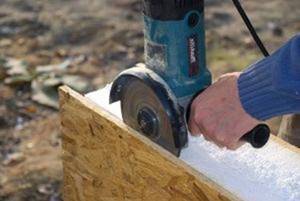
Grinder for cutting foam plastic
The high speed of rotation of the grinder disk and fairly large teeth will provoke severe destruction of the structure of the material at the cutting site. When using a jigsaw, it is also impossible to obtain a perfectly flat surface on the cut due to vibration of the file, which also leads to the formation of small polymer debris.
The least amount of foam crumbs is formed when cutting it if you use a homemade device for cutting foam. The simplest type of such a device is an ordinary thin wire (string), with handles attached to the ends for greater convenience. The wire diameter should be chosen as small as possible, no more than 0.5 mm. One person cannot cope here; an assistant will be needed. The wire is installed along the intended mark on the foam and uniform movements are made on both sides. As a result of the friction of the metal wire against the polystyrene foam, it heats up and the material begins to melt at the cut site.
Cutting foam plastic with a string is the most effective method in terms of creating a minimum amount of debris, but the time spent on such work is much longer than when cutting with other tools.
What and how to cut foam plastic
In order to cut a specific shape of insulation, any device for cutting foam plastic can be used:
- knife;
- hacksaw for wood or metal;
- soldering iron;
- an angle grinder called a “grinder”;
- thin metal wire like a string;
- thermal cutter;
- foam cutting machine;
- jigsaw with heated file.
If you choose a hacksaw for wood, then its teeth should be as small as possible. All tools that are not heated to a certain temperature do not guarantee that the foam will not crumble. Such tools are used for small volumes of work, but when it is necessary to insulate all the enclosing structures of a house, it is better to use a foam cutting machine, the action of which is based on heating the cutting element.
A variety of methods - let's start with the more accessible ones
In order to insulate walls, ceilings or something else, most often you have to cut large sheets of insulation. Then the question arises: how to cut foam plastic? This becomes a problem because the foam crumbles and breaks easily. Cutting polystyrene foam at home can be done in several ways; let’s evaluate their diversity.
You can cut off a piece with a wallpaper knife. Using such a cutter for foam plastic is cheap, silent, fast and affordable. The advantage of this method is the minimum amount of waste. The sharper the knife, the faster and better the material will be cut. Therefore, it is better to use a new, sharp blade.
It should be taken into account that the thicker the foam, the less even the cut may turn out. But this method has its drawback - with this knife you can cut foam plastic no more than 5 cm thick. If you use a jigsaw, the cut will be ugly and uneven, and there will also be a lot of debris.
Before cutting the foam, you will have to take a longer saw, then you can cut sheets up to 10 cm thick without much effort. Working with a hand saw on wood is the most common way to cut foam. This does not require any specific knowledge.
Self-assembly of a cutting machine
Manual processing of foam plastic is possible at home and in small workshops using a simple device assembled from scrap materials. Extruded polystyrene foam has a fairly dense structure, so slabs can be cut with a metal tool heated to a certain temperature. A wire that supplies electric current is suitable as a cutting surface, the supply of which is associated with the main difficulty of assembly.

A self-made machine makes it possible to obtain tiles or bars of suitable thickness from ordinary polystyrene foam for packaging for their further use in various structures. This device can also be used to cut foam rubber or similar materials that are needed for the manufacture or repair of upholstered furniture. The compact dimensions of the device for cutting foam plastic with your own hands using nichrome allow you to install the machine in a small workshop or even on a balcony.
To cut polystyrene foam at home, you will need a structure that can be assembled from simple materials available at any hardware store. You must first determine the parameters of each element, taking into account the size of the foam boards that will have to be processed . In most cases, the following details are sufficient:
- The base is made of dense plywood, chipboard or solid wood. You can order new parts or use elements of old furniture (doors, walls, shelves). To work with foam plastic, a base of 400 x 600 mm is sufficient.
- String or wire in the form of a thermal knife for foam plastic.
- Metal posts, screws, springs or regular nails to secure the wire. The installation height of the cutter depends on the expected thickness of the finished slabs.
- Fastenings for parts on the base. A few self-tapping screws are enough to secure the structural elements.
To assemble the thermal cutter, you will need up to one hour of working time. Each of the structural elements can be quickly replaced during repairs or expanding the capabilities of the device.
DIY cutting technology
There are many options for constructing effective foam cutters using improvised materials. Two of them are especially popular - a cutter and a machine with nichrome thread. Each tool is quite easy to use and is capable of providing smooth and high-quality cutting of cellular material.
DIY foam cutter
In the process of manufacturing a cutting device, it is necessary to use the following materials and tools:
- screwdriver or hammer drill with drill;
- soldering device;
- two identical pencils;
- tongs with a rounded section at the ends;
- PVA glue or other heat-resistant adhesive;
- nichrome thread;
- two copper wires;
- a wooden block 10 centimeters long;
- insulating tape;
- double box for batteries;
- wires - one meter;
- switch.
To power this portable cutter, two regular AA batteries are used.
Manufacturing process
Having collected all the necessary parts, you can begin assembling the cutter structure:
- At each end of the wooden block, make one hole corresponding to the diameter of the selected pencil. Its depth should reach half of the wooden plank. You need to make an indent of 1.5 centimeters from the edge of the bar.
- At the bottom of the pencils, form a hole for installing copper wire, the ends of which are rolled into a ring.
- Place the plastic battery box on top of the block on the glue. Fix the pencils with the same compound in the previously made holes.
- To regulate the current on the string, install a switch on a wooden plank.
- The two wires should be soldered to the connector located in the battery container. From there, lead the current conductor to the switch, and then strip the ends from the braid and, using a soldering iron, fix them to the copper wire on each individual pencil. Insulate joints.
- Pull the nichrome string tightly, thread it and secure it well between the copper rings.
Insert batteries into the finished cutter and you can start working. This tool is capable of cutting foam up to 4 centimeters thick. At the same time, you can use it to cut out simple shapes.
Homemade machine
A stationary installation for cutting foam plastic allows you to more accurately cut a cellular product along the intended lines. During the processing process, you do not need to make movements with the tool, but simply move the material itself. You can make the machine yourself.
Homemade foam cutting machine
To make a stationary cutter, you need to prepare the following devices:
- two long self-tapping screws with wide heads.
- nichrome string;
- wires for connecting current;
- rheostat to regulate the charge strength;
- step-down transformer with a voltage of 12 volts.
A table is used as a base. You can make the supporting part yourself. The main condition for its manufacture is the presence of a flat, smooth surface. The dimensions of the table are selected arbitrarily.
Manufacturing technique
Assembling a homemade machine is not particularly difficult:
- A longitudinal line is indicated in the center of the table. Self-tapping screws are fixed at its ends on both sides of the supporting plane;
- The nichrome thread is stretched between the installed screws. At one end it is simply fixed, and at the other it is passed through a spring. The string should be located at a height of 10 - 15 centimeters from the level of the table surface.
- The wires coming from the transformer are connected to both ends of the stretched nichrome thread. On one side of the self-tapping screw on which the wire is fixed, a load is suspended. It provides good tension to the cutting element.
The device is activated when power is supplied to the transformer. The cutting process occurs due to the heating of the string. At the same time, it must become too hot, otherwise you will get a wide cut.
To cut the foam, pull it through a hot thread. The cellular structure of the material allows you to quickly and accurately perform thermal cutting. The edges of the product are sealed at high temperatures, ensuring even cutting.
This type of cutting requires caution and safety precautions. As personal protection, gloves are used, as well as a mask that protects the material from the vapors emanating during the heat treatment process.
Cutting polystyrene foam at home can be done in any convenient way. The main thing is that the selected tool has the ability to provide smooth edges and cutting accuracy.
Homemade machine for cutting foam plastic from LATR, transformer and nichrome thread
Most do-it-yourselfers make a heat cutter from what they have on hand. If they buy anything, it’s nichrome thread. The rest is found by scraping the bottom of the barrel. This is exactly what a FORUMHOUSE user with the nickname Electron did.
Electron
I insulate the house with polystyrene foam. I bought PPS with a thickness of 5 and 10 cm. First I cut it with a knife along a ruler. Inconvenient. I decided to make a thermal cutting machine for polystyrene foam. Things went faster with him. To make it I needed:
- table-workbench (was available);
- aluminum corner;
- aluminum profile;
- steel corners;
- wooden block with a section of 5x5 cm;
- chipboard sheets left over from an old cabinet;
- transformer for 650 W and 36 Volts and LATR (were on the farm);
- nichrome wire with a diameter of 0.5 mm and a length of 5 m (bought on the market).
The user did this with a machine for cutting PPS - he passed a nichrome thread through a hole in the table. The thread passes through the ceramic socket from the radio tube. To tension the wire, Electron took an M10 stud with nuts. He ground off flats from one edge and drilled a transverse hole. I threaded a spring into it. He clamped the end of the spring into a polyethylene brass terminal block. I clamped the string and the supply wire into the second end of the terminal. This is necessary so that the current does not flow through the spring, and it does not lose its springy properties. After applying voltage, the tension of the nichrome thread is adjusted using a pin.
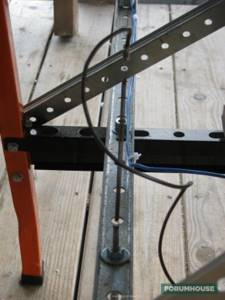
The spring compensates for changes in the length of the nichrome thread when it is heated and cooled.
Electrical diagram of a homemade foam cutting machine.
Electron
I cut sheets measuring 1.2 x 1 m on the machine. I made about 150 cuts of foam plastic with one string. Didn't burn out. The cutting speed of PPS with a thickness of 100 mm is 10 cm per second. Be sure to make a third thread attachment point. In my case, this is a hole in the table where a ceramic socket from a radio lamp is attached. The optimal filament heat is not to red, but so that it is barely visible in the dark. Those. - almost dark.
Cutting tools and accessories
Foam cutting diagram.
- Trimming with a wallpaper knife. The most accessible, cheapest and fastest way to cut foam. At the same time, the better and sharper the knife, the better and faster the process will be carried out, and the minimum amount of waste will be generated. Therefore, it is best to use a knife with a new blade. But this method also has a drawback: cutting thick slabs with a knife will either not be possible at all, or will be uneven. The use of a knife is justified only when the material is 1-5 cm thick; for larger thicknesses this method is not justified.
- Trimming with a jigsaw. You can use a jigsaw to cut foam plastic up to 10 cm thick, the main thing is that the blade is long enough. During operation, the cut is not as even as when using a wallpaper knife; a lot of debris is generated. However, this method does not require any effort. In addition, if there is no source of electricity, then it will no longer be possible to use the tool.
- Trimming wood with a hand saw. This method is simple, quick, and does not require much effort.
- Trimming with hot wire or string. This method is the most effective, providing the smoothest cut with minimal debris. This is the method used in industry and factories. Using a hot wire, you can cut foam of any length and thickness. The disadvantage of this method is the difficulty of acquiring it. It is unlikely that you will find anything similar to such a device in a store. Therefore, the only way out is to do it yourself. And if heating a wire using electricity is quite simple, then you will have to tinker with the mechanism that raises and lowers the string. This method is best used by someone who constantly works with the material. Otherwise, you can make do with improvised tools.
How to cut polystyrene foam perfectly straight?
#1
Considering insulation made from polyvinyl chloride, we can come to the conclusion that this material is quite warm, capable of retaining heat inside the building in the winter. But in order to carry out work on insulating the house, you need to consider how to cut the foam and attach it to the facade wall. To do this, you will need material and tools, thanks to which the work will be done. In order to cut foam plastic, most craftsmen use a stationery knife with a very sharp blade.
#2
As for polystyrene foam, it can have a density of 5.5 and 35, as well as a thickness of 0.0, 0.0, 0.0 mm. The thicker and denser the material, the harder the cutting is, so another option should be considered, which is cutting polyvinyl chloride insulation. When considering the topic of how to insulate a facade with polystyrene foam, you first need to cut it to size using a string. The polystyrene foam is stacked, after which markings are made along the side, then plates with a slot are installed on both sides and cutting is performed. All work is done perfectly simply and is done by one or two people.
#3
In order to figure out how to insulate a balcony with polystyrene foam, performing all the work on the front side of the house, you will need to cut the foam plastic to pre-prepared sizes. To do this, you will need a sharp cutting tool, as well as an even guide rail or metal plate, against which you need to rest the cutter and run it along its entire length, thereby obtaining the required cut. If you want to understand how to cover a house with foam plastic, then you need to decide on the finishing material.
#4
For example, this insulation will be a 35 density foam finish. Next, you need to understand how to attach polystyrene foam to the wall and to do this, you first need to cut the material into blanks. Dense foam is quite difficult to cut with a utility knife, and a hacksaw would be a more suitable tool. Usually a wide blade is used, which has teeth on both sides. It is with this metal blade that you can easily cut through foam plastic according to pre-marked markings.
Knife cutting
When insulating a floor or ceiling using foam boards, it is not at all necessary to use special equipment.
To cut polystyrene foam at home you need to have:
- Nice knife.
- A ruler more than one meter long.
- Pencil.
The procedure for cutting polystyrene foam boards in this way is quite simple:
- The starting and ending points of the cut line are first marked on the surface of the material with a pencil.
- Next, a ruler is applied to these marks, clamped, and an incision is carefully made along it with a paint knife (it is not necessary to completely cut off the piece of foam plastic).
- The polystyrene foam plate is turned over to the other side, and a cut is made in the same way, parallel to the cut already made.
- After making the cuts, you just need to break the foam along the line.
This method of cutting material is the cheapest, quietest and fastest, and there is practically no debris after finishing the work. Be sure to check the sharpness of the knife before cutting foam.
Shaped cutting of foam plastic
Often designers use polystyrene foam to create some kind of decor.

How do you cut the foam? In such cases, shaped cutting of good quality foam is required. The edges should be smooth and not crumble. For these options, use a regular soldering iron. To achieve maximum effect, the tip of the tool is flattened or a nozzle of the required size and shape is made. A heated soldering iron allows you to perform high-quality, even cutting, which is necessary for decors. Another important point: during work there will be practically no small debris.
Foam cutting machine
There is no need to invent a design; there are ready-made industrial designs.
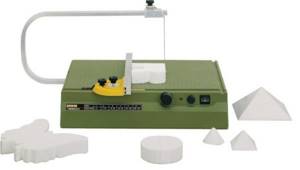
By analogy, we make a homemade machine. The manufacturing technology is the same as in the previous model. A tension frame is cut out of dielectric material and attached to a flat tabletop.
One end of the nichrome wire is threaded into the hole (on the work table), and the other is suspended from the frame. A spring is used to maintain tension. The power supply and string are selected based on the same principle as on the guillotine: voltage 12-36 volts, adjustable.

The capabilities of such a device are very wide. You can even make complex geometric shapes using prepared templates.

If you allow the table to be tilted relative to the vertical of the string, you will be able to make oblique cuts with high accuracy.
Any machine for cutting foam plastic, even one made by yourself, takes up a lot of space. For construction work (insulation), you can get by with hand cutters. Shaped cutting of foam plastic can generally be done using compact devices.

This is an analogue of a jigsaw, only not mechanical, but thermal. For the tension circuit it is better to use thick copper wire.
It has low resistance, which will reduce electrical current losses. The rigidity is enough to keep the wire in tension. The power source, as before, is either a car battery or an adjustable transformer. If shaped cutting of polystyrene foam with your own hands does not require special precision (for example, you are simply cutting out technological holes in the insulation), you can use a homemade attachment for a regular soldering iron with a power of 40-60 W. The knife attachment is cut out of galvanized sheet metal and fits tightly onto the soldering iron tip.
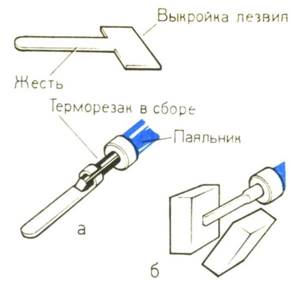
How to properly cut polystyrene foam with a knife so that it does not crumble
When slabs of polymer material are used in the process of insulating walls, ceilings, and roofs with your own hands, thermal cutters are not always justified. Structures, as a rule, have strictly geometric shapes, and it is quite possible to cut the material with a simple knife, the main thing is that the blade is thin and its length exceeds the thickness of the insulation sheet. A good tool for such work is a stationery knife if you have to cut thin polystyrene foam.
To cut foam with a knife, you need to choose a long blade
The fact is that the blade of such a tool is very thin and when cutting a sheet of great thickness, a perfectly even cut is unlikely to be achieved; wrinkles may form on the cut, which will not allow the individual parts of the insulation to fit tightly together. And this will lead to the formation of cold bridges.
In addition to the knife you will need:
- A rigid measuring ruler or a ruler of ideal shape.
- Roulette.
- Simple pencil, marker.
They cut polystyrene on a solid base so that the sheet does not “play” in your hands. Marks of the required size are made on the surface of the polystyrene plate, after which a rigid ruler or strip is laid and a cut is made with a sharp knife. If the length of the knife blade is not enough, you can make cuts on two opposite sides of the sheet, the main thing is not to lose the size. Then the sheet is simply broken along the cut. With proper skill, the work will proceed quickly, without unnecessary noise and waste of electricity. Of course, there will be debris, but not as much as from a hacksaw. The main thing is that the tool is very sharp and of the required length.
Foam plastic is cut with a stationery knife and a thermal knife - comparison of the cut line
How to cut polystyrene foam without using heat tools
The principle of cutting sheets of foam plastic using a hacksaw, regardless of whether it is for metal or wood, is no different from cutting with a knife, the main thing is that the teeth are small and the blade is of sufficient length.
In this case, the cut will be smoother and a lot of small debris will not form. The saw movements must be made smoothly, without jerking. But even with this cutting method there will be a lot of expanded polystyrene crumbs.
You can cut foam sheets using an electric jigsaw or an angle grinder (grinder). However, with this method, a huge amount of garbage is guaranteed.
Grinder for cutting foam plastic
The high speed of rotation of the grinder disk and fairly large teeth will provoke severe destruction of the structure of the material at the cutting site. When using a jigsaw, it is also impossible to obtain a perfectly flat surface on the cut due to vibration of the file, which also leads to the formation of small polymer debris.
The least amount of foam crumbs is formed when cutting it if you use a homemade device for cutting foam. The simplest type of such a device is an ordinary thin wire (string), with handles attached to the ends for greater convenience. The wire diameter should be chosen as small as possible, no more than 0.5 mm. One person cannot cope here; an assistant will be needed. The wire is installed along the intended mark on the foam and uniform movements are made on both sides. As a result of the friction of the metal wire against the polystyrene foam, it heats up and the material begins to melt at the cut site.
Foam cutting machine based on a computer power supply
Not all home craftsmen have a transformer lying around in their bins, but many have a power supply from an old computer lying around gathering dust. It's good that you didn't throw it away. It will come in handy to make a thermal cutter for foam plastic.
OnlyOnUser FORUMHOUSE
I assembled a foam cutter for 3 kopecks. I used the power supply from the computer and everything that was lying around at the construction site - boards, slats, screws. I made the string by stretching a spiral from an electric stove. The length of the spiral is 10 cm. It produces a straight wire 60 cm long and 0.5 mm in diameter. The issue price is 45 rubles. The string tensioner is a hammer. I assembled the device using self-tapping screws. I energized the string by connecting to it the yellow wire of the 12-volt power supply and the common black wire.
wind1windSuper-Moderator FORUMHOUSE
To start an ATX computer power supply, connect the green PS-ON pin with a jumper to GND (common wire). The photo below shows the pinout of the 20-pin connector on the motherboard. On the power supply block these outputs are mirrored.
Homemade foam cutting machine
You can make a tool for cutting foam plastic with your own hands at home. The model is selected depending on the design features.
Making a thermal cutter
You can make a thermal knife for foam plastic using a jigsaw and a soldering iron:
- The main part in this device is the bushing. It is made from a plate that is previously sharpened, bent, and then a hole is made. The hole is needed for the thread.
- The wires coming out of the hole are cut off. In places of rupture, the holes are soldered. It turns out to be a burner.
- A jigsaw is mounted into the finished plate. It is cut into two parts and bolted to the top of the plate. The lower part of the plate is installed on the base, secured with self-tapping screws.
- The sleeve is installed in the foot.
- A hole with a thread of 5 mm in diameter is drilled in the base.
- To straighten the nichrome wire, turn on the burner and touch the wire with its wires. The burner will begin to hum when the wire is slightly heated. This means that it has low resistance, and the wire is replaced with a thinner version.
After production, test cutting is carried out.
Nichrome cutter
A distinctive feature of this device is the ability to cut material in two ways: lengthwise and crosswise. It consists of thread or wire. This part of the tool is basic and cannot be replaced by anything. An alloy of nickel and chromium is used to make wire and thread. To cut a sheet of a certain height, the thread is set in a horizontal position. A device with a nichrome wire cuts a thick sheet of foam into thinner pieces.
Step-by-step instruction:
- Two screws are screwed into a wooden block. They are located at a smaller distance from each other than the length of the thread.
- A wire is pulled over the screws.
- The crocodiles of the power supply are attached to both sides of the threads. The power supply must be 1 amp. Crocodiles are swapped if the device does not work.
- The thread heats up if the hook is moved closer to the center point.
- The base for the cutter is made from aluminum reinforcement about 50 cm long. PVC sticks (insulators) are inserted at the ends of the heated reinforcement. They are attached to a fiberglass strip cut in half.
- The wires are routed to the installed base from a jigsaw or tile cutter. Wires and steel wire rings are attached to the bolts threaded through the PCB. A spring is tied to one side of the thread, and a ring is attached to the other side.
Using such a machine, you can make shaped products using ready-made templates.
Before cutting the foam using nichrome, the spiral is set to the required height. The height is measured with a ruler. The device is connected to the charger. The foam sheet is smoothly moved along the tabletop when the string becomes hot. Do not forget that when working with the device you must follow safety precautions.
Foam cutting machine
The orderliness and uniformity of the structure of high-density polystyrene makes heavy types of foam an ideal material for the manufacture of all kinds of models, crafts, and design elements. Sometimes you just need to cut a sheet of foam longitudinally, which turns out to be not so easy to do by hand. If you have to halve a dozen thick slabs, you can significantly simplify the task by making a machine for cutting foam plastic with your own hands. The construction of such a device will take a maximum of a few hours, but foam cutting can be done in unlimited quantities.

Thermal methods for cutting foam plastic
Cutting material using a thermal cutter is also a fairly popular method. The instrument itself has the appearance of a nichrome thread, which is laid on a frame in the shape of a frame. When an electric current passes through the nichrome wire, the metal surface heats up and the foam begins to melt. There are several types of cutter designs. The simplest option takes the form of a nichrome string stretched over ceramic insulators, which are attached to the edges of a frame made of wood or metal.

Using this tool, you can cut not only foam boards, but also wooden slats, plastic pipes, as well as any material that melts or decomposes at temperatures up to 270°C. If you need to cut sheets with a significant length of cut, then it is much more comfortable to use the machine, which looks like a thread stretched in a vertical position on a textolite stand.
To control the heating of the nichrome string, an LATR or rheostat is used. Excessively high surface temperatures can cause melting and even lead to fire of the insulation. The advantage of this method is the complete absence of dust and debris, and the cut site itself takes on a melted appearance, outwardly reminiscent of alkyd varnish treatment.
If, in the process of working with foam plastic, there is a need to cut off only small parts of sheets, for example, when making models and sculptures, then the best option is to use an attachment for a powerful electric soldering iron.
In addition, lasers are used to cut this material. In some cases, it is even used at home. For this task, an ordinary LED laser with a power of 2-5 W is used, through which it is possible to cut foam boards along any desired trajectory. At the moment, using such a tool, you can cut paper and foam plastic within 10-15 minutes, which is why it is quite difficult to process a significant volume of material with it.
Having familiarized yourself with the different options, you can not only find out what is better for cutting polystyrene foam at home with your own hands, but also choose the most suitable method for use, through which it will be convenient to cut it.
Video:
